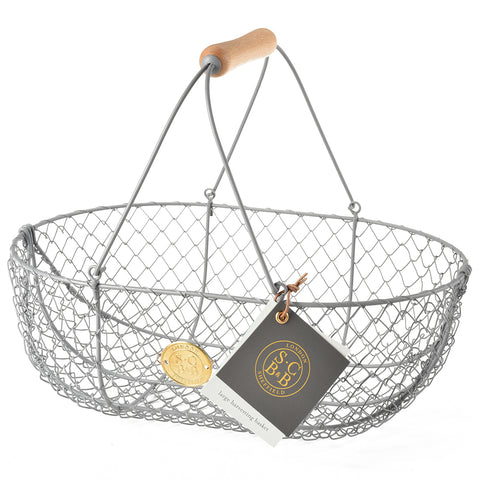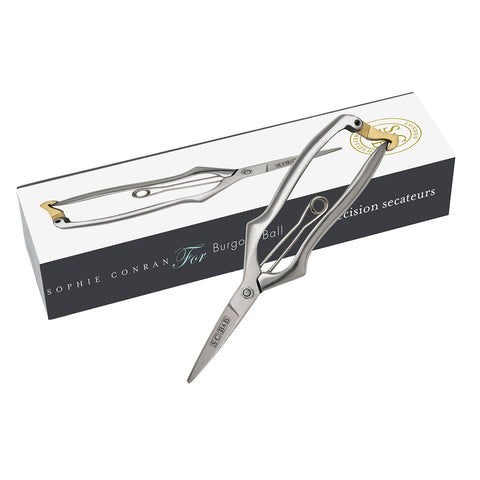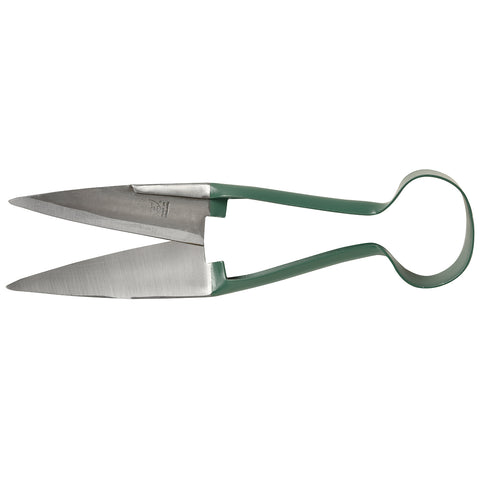 If you were lucky enough to go to the RHS Hampton Court Palace Garden Festival this year (renamed from the RHS Hampton Court Flower Show), you probably saw the beautiful Naturecraft Garden, designed by Pollyanna Wilkinson. It proved a huge hit with visitors, and earned the People’s Choice award as visitors’ and viewers’ favourite garden.
If you were lucky enough to go to the RHS Hampton Court Palace Garden Festival this year (renamed from the RHS Hampton Court Flower Show), you probably saw the beautiful Naturecraft Garden, designed by Pollyanna Wilkinson. It proved a huge hit with visitors, and earned the People’s Choice award as visitors’ and viewers’ favourite garden.
Like many of the gardens at the RHS Chelsea Flower Show's gardens this year, it picked up on a return to a more natural style, with billowing umbellifers floating above leafy green planting. But this was a wild garden with a difference: it was created as a workspace.
 A garden for someone deeply in tune with nature, the Naturecraft Garden featured all kinds of references to ancient crafts woven through the garden; from the magical hawthorn and hazel in the hedge, to the herbs for healing, and the plants for making dye. Polly expertly selected a plant list which reflected a range of ancient wisdom, handed down from mother to daughter, generation after generation.
A garden for someone deeply in tune with nature, the Naturecraft Garden featured all kinds of references to ancient crafts woven through the garden; from the magical hawthorn and hazel in the hedge, to the herbs for healing, and the plants for making dye. Polly expertly selected a plant list which reflected a range of ancient wisdom, handed down from mother to daughter, generation after generation.
We were thrilled to be able to support Polly with a selection of our products as she created this sanctuary where creativity can thrive. Among the many eclectic and fascinating objects dotted around the garden, you may have spotted our Sophie Conran harvesting basket and precision secateurs or our RHS-endorsed topiary shears; we hope our items helped conjure up the garden’s captivating, timeless feel.
In this peaceful space, we were quite intrigued by the plants for dyeing, and fell a little in love with the evidence of the gardener’s industrious nature. From the rose petals in the cauldron over the fire, to the skeins of wool being coloured in an old bathtub, to the swatches of cloth on the walls in the shepherd’s hut, this gardener is creative in a wide variety of ways – and knows how to work with the gifts of nature.

 The Naturecraft Garden included plants such as wild carrot (Daucus carota), dyer’s chamomile (Anthemis tinctoria) and St John’s wort (Hypericum perforatum), all of which yield natural dyes; the first two yellow, the latter pink, belying its yellow petals.
The Naturecraft Garden included plants such as wild carrot (Daucus carota), dyer’s chamomile (Anthemis tinctoria) and St John’s wort (Hypericum perforatum), all of which yield natural dyes; the first two yellow, the latter pink, belying its yellow petals.
In fact, many of the plants which are useful for dyes have botanical names including ‘tinctorum’ or ‘tinctorius’, which comes from the Latin word ‘tinctura’, meaning ‘dyeing’. With the Gardener’s World TV show also featuring a dyer’s garden packed with plants useful for natural colour, we decided to investigate further and find some plants we could grow for their dye properties.
If things work out, we’re thinking about dyed raffia for beautiful gift-wrapping, maybe some tinted cloth for cross-stitch or silk for a scarf, possibly some coloured handmade paper for card-making… we can feel the inspiration flowing!
Natural dyeing specialist Katelyn Toth-Fejel admits that 95% of plants will produce endless variations on the theme of yellow. But there are possibilities beyond that, with greens, reds, blues and purples achievable with the right plants and a little practice.
 To get us up and running, we wondered which plants we could easily grow in the garden, to start us off on our journey of colour – and here are some lovely ideas:
To get us up and running, we wondered which plants we could easily grow in the garden, to start us off on our journey of colour – and here are some lovely ideas:
Hollyhocks (Alcea rosea) – An essential of every cottage garden and a favourite with pollinators, these beautiful bright blooms certainly fall into the ‘50 Shades of Yellow’ category, with blooms of most colours producing yellow dye. The flowers of the black hollyhock (Alcea rosea 'Nigra') vary this with a colour which is lavender or even purple.
Woad (Isatis tinctoria) – We're all taught about how the Celts painted themselves with blue dye from woad to make themselves look fearsome in battle. Not your usual garden centre potted plant, but seeds are nevertheless easy to buy – Sarah Raven offers them, for example.
Marigold (Calendula officinalis) - You only have to glance at these gorgeous sunset shades to know there’s intense colour in this plant, waiting to burst out! Calendula makes a vibrant yellow dye, easily obtained from the flowers, petals or even the old blooms you’ve deadheaded.
 Dyer’s coreopsis (Coreopsis tinctoria) - Once again, the clue is in the Latin name. This bright and breezy annual flower has beautiful cheery flowers of yellow and deep red, and the dye colour achieved varies also from yellow through sunset shades to a lovely deep rusty red, depending on the fixative used.
Dyer’s coreopsis (Coreopsis tinctoria) - Once again, the clue is in the Latin name. This bright and breezy annual flower has beautiful cheery flowers of yellow and deep red, and the dye colour achieved varies also from yellow through sunset shades to a lovely deep rusty red, depending on the fixative used.
Sunflower (Helianthus annuus) – These can give incredible results, from pink through green to almost black, depending on the fixative. We’re stumbling into the fascinating world of chemistry and pH values here, and we can see that there will be some experiments ahead, no doubt with varying success rates! But in the meantime, we can get growing those statuesque golden beauties, which bring a touch of summer sunshine to any garden.
As gardeners, we're used to a process of trial and error, followed by continuing refinement and improvement - it's all part of the fun! And while we’re doing our dyeing experiments, we’ll be able to imagine ourselves back in Polly’s fabulous Naturecraft Garden, working with the colours nature provides in that beautiful, creative space.
o0o
 All photos of Polly's Hampton Court garden copyright Oliver Symons-Thomas.
All photos of Polly's Hampton Court garden copyright Oliver Symons-Thomas.
Many congratulations to Pollyanna Wilkinson on winning the People’s Choice award at RHS Hampton Court Palace Garden Festival with her Naturecraft Garden – and thanks for giving us so much inspiration!




